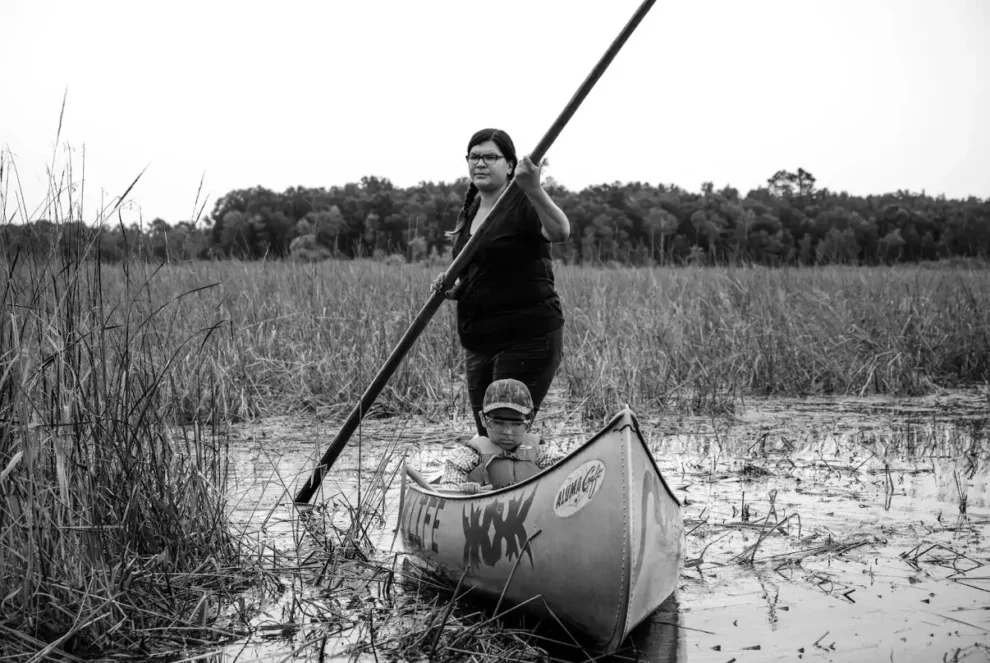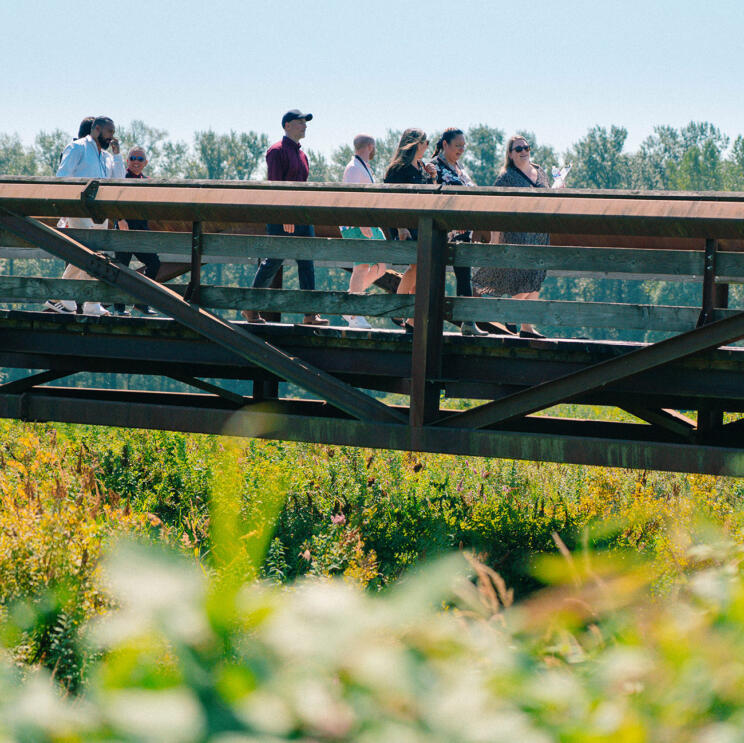Dismantling Environmental Racism in Canada
“There are few people who want a landfill near them.”
Dr. Ingrid Waldron, a professor in the Faculty of Health at Dalhousie University and the executive director of the ENRICH Project, studies the intersections of health, race, and socioeconomic status in communities affected by environmental pollution.
Her research focuses on the impacts of environmental racism: the disproportionate placement of polluting industries like chemical plants, pipelines, waste facilities, and mines in or near Indigenous, Black, and other racialized communities.
When these sites leak pollutants into the air, water, and land, people living near these sites are at greater risk for adverse health, social, and economic impacts.
Waldron says that these environmental hazards have been linked to higher rates of cancer, respiratory disease, reproductive illness, and premature death.
For example, in northwest Ontario, members of Grassy Narrows First Nation have suffered the effects of mercury poisoning for generations due to Dryden Chemical Company’s dumping of approximately 10,000 kilograms of mercury into nearby water systems between 1963 and 1970, contaminating water and fish.
In southern Ontario, more than 40 per cent of Canada’s petrochemical facilities are located in a stretch of land known as Chemical Valley, sited next to Aamjiwnaang First Nation. Members of the Nation experience disproportionate rates of cancer and respiratory illnesses. Studies have shown that exposure to environmental and chemical risks is associated with a change in the sex ratio of babies, perhaps by disrupting hormones in parents. In the Aamjiwnaang community, people give birth to twice as many girls as boys.
“There is not a single part of our territory, including our bodies, that has not felt the impact of these industries that give us noise pollution, air pollution, and water pollution, making their way through ecosystems and into living beings,” wrote Beze Gray, a Two-Spirit member of Aamjiwnaang First Nation, in a foreword to a 2020 Greenpeace Canada report.
Waldron notes that, in addition to physical health impacts, community members experience mental health impacts, and intergenerational trauma.

She points to the community south of Shelburne, Nova Scotia, where Black residents still contend with the stigma of having a dump for industrial, medical, and toxic waste in their community.
“One of the leaders of that community articulated very well, at a press conference, how stigmatizing it has been,” said Waldron. “She said ‘we are seen as the dump, because we live near the dump.’ It’s that layered stigma – of being a racialized community, and also being a racialized community that is near a dump.”
In 2018, Waldron published There’s Something in the Water, a book documenting community experiences of environmental racism in Nova Scotia, and worked with actor Elliot Page to produce a documentary of the same name, released in 2019.
“Ultimately, environmental racism is sustained over generations through environmental policy that disregards the priorities of affected communities,” says Waldron.
In Canada, the federal government has come one step closer to redressing the harm of environmental racism and including an analysis of race, socio-economic status, and geography in the approval process for future projects.
On March 24, 2021, Bill C-230, also known as the National Strategy to Redress Environmental Racism Act, was approved at second reading in the House of Commons, and was referred to committee. Waldron’s research, mapping, and advocacy work helped form the basis for this proposed law.
“Like systemic racism, environmental racism is something that has been ignored for far too many years,” said Lenore Zane, MP for Cumberland-Colchester in Nova Scotia, when introducing Bill C-230 for a second reading in Parliament. “The time has come for us to act to redress the problems of the past and make sure they do not continue. Surely it should be enshrined as a human right for all Canadians to have clean air, water, and earth.”
If Bill C-230 passes a third reading and becomes law, the act will formally recognize that environmental racism exists in Canada and require the government to examine links between environmental hazards, race, socio-economic status, and health impacts, and to include racialized communities in environmental decision-making processes.
“In many ways, [Bill C-230] is trying to redress past wrongs, but it also looks to the future in terms of developing a model or strategy that’s preventative,” says Waldron.

Stephanie Butler
Contributor & Copy Editor (she/her)
Stephanie is a writer and communications generalist who has worked in philanthropy, housing, and higher education. In her work, she helps organizations tell clear, memorable stories about people and projects that matter. An impatient optimist, Stephanie is especially interested in work that blends climate action with social justice.
Stephanie grew up in a small town on Algonquin Anishinaabeg lands (Ottawa Valley) and is grateful to have found home and friendships on the unceded lands of the Squamish, Musqueam, and Tsleil-Waututh peoples (Vancouver, Canada). In her community, she has volunteered as a digital literacy mentor, policy advisor, Girl Guide leader, and horticultural therapy assistant. In her downtime, she loves listening to heavy metal music, baking vegan treats, and curling up on the couch with books, cats, and blankets.








